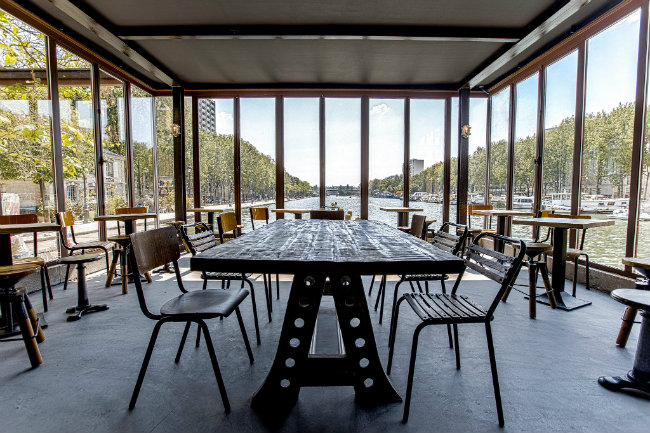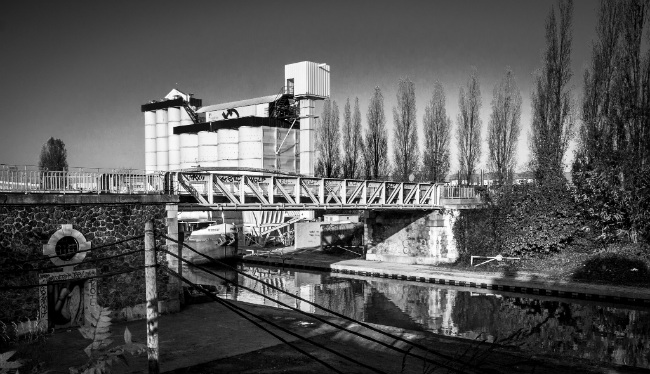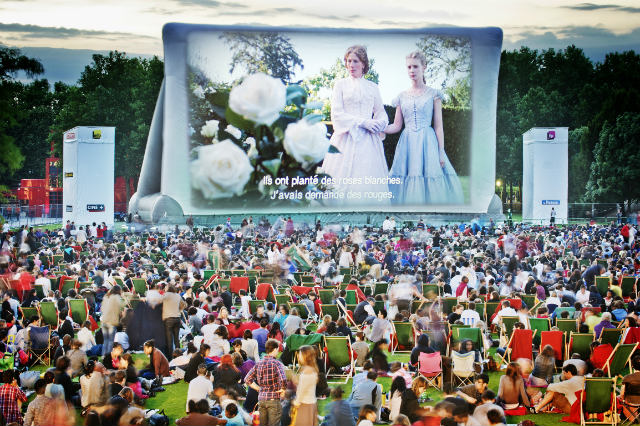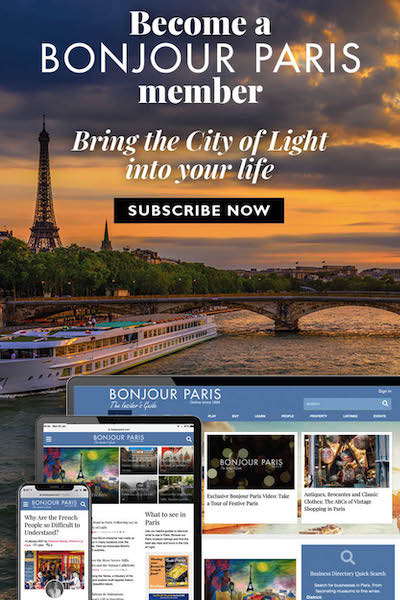A Flâneur in Paris: Strolling the Canal Saint Martin & Canal de l’Ourcq

The time-honored tradition of getting to know Paris by walking its streets can take many forms. Ranging from a formal guided tour to a leap into the unknown with a random ramble, there is a plethora of experiences to be had. Somewhere in the middle of the two extremes is to pick a particular part of the city for some unsupervised exploration. A less traveled but still revelatory option is a walk along the Canal Saint Martin and continuing along the Canal de l’Ourcq.
Constructed on Napoleon’s orders starting in 1805, the canals– and their history– reflect the layered nature of Paris’s urban development. Initially, they were above ground all the way to the Seine and served as a water supply and transport route. Over time the section from the Seine to Place de la République was covered over making way for Boulevards Jules Ferry and Richard Lenoir. During the 1960s, plans to replace the canal with a major highway thoroughfare were very close to becoming reality only to be scraped at the last minute. Now they serve as a neighborhood attraction and social gathering spot.

Canal Saint Martin by Marko Maras/Flickr
To walk the Canal Saint Martin in the middle of the day starting near République, one experiences Paris as most people know it. A bustling urban center with a distinctly French flavor: cafés, shops, people strolling or chatting on their lunch break. However, the Canal provides visual and spatial relief from the frantic energy of the city, giving you the uptempo urban rhythm of Parisian life and a more contemplative atmosphere at the same time. This is not a touristy area, even at the height of the season, so the foot traffic allows for some good people watching but with plenty of breathing room.
The Bassin de la Villette, which immediately follows the Canal Saint Martin, is an altogether different situation. More akin physically to the Seine, it is an artificial lake that creates an expansive open-air atmosphere from the moment you approach it. The southern starting point of the Bassin is the Place de la Bataille-de-Stalingrad, which features both a rotunda and a fountain. The setting, with the fountain looking out on the Bassin, almost acquires the feeling of a vacation destination. In addition it is often filled with rented paddle boats, cruise ship tours, and even sailboats. There is an acute sense that this is a separate realm from workaday Paris as the surroundings contain less urban density and chaos if you stay close to the water.

A bridge over the Canal de l’Ourcq at Pantin. Photo credit: Jean-François Gornet/ Flickr
It is the final stage of the canal walk where the most intriguing revelations come to light. Having started with an area that has a classical Parisian feel, the transition into Parc de la Villette is a striking one. Designed in the 1980s, it in many ways is the perfect representation of modern Paris. For a city that prizes history and tradition, the ability to continually reinvent itself without the need for redefinition is on full display. The designer, Bernard Tschumi, drew for inspiration on Jacques Derridas’s deconstructionist interpretation of Plato’s Khora concept. That Paris would have a park based on an Ancient Greek concept reinterpreted by a 20th century French philosopher is the embodiment of how it maintains its balance between past present and future. However, it’s all well and good to consider it on conceptual terms, what’s most important is that it’s such a lovely space to visit.
There are any number of reasons to visit the Parc de la Villette. It is home to an embarrassment of riches, including three major concert venues, the Cité des Sciences et de l’Industrie which is the largest science museum in Europe, and much more. As much as the attractions might impress, the park itself is just as noteworthy. Open fields connected by small wooded area pathways surround the venues, all centered around the Canal de l’Ourcq and the magnificent footbridge that connects the two sides. The Parisian preoccupation with carefully crafted public space is given a bucolic spin that breathes new life into the tradition. After making the long walk up, sitting on the grass and enjoying the space is enough of a reason to go all by its own.
This particular exploration of Paris has a lot of upside. For one thing, it’s free but you can always augment it if you want to go out on the water or join in on any number of activities at the Parc de la Villette. It also allows for discovery but sidesteps the often Byzantine nature of Parisian streets; just follow the water and there’s plenty to see. Most of all though, it offers a chance to see the direct line between the city’s past and future and how vital that is to its allure.

Cinema en Plein Air/ courtesy of Parc de la Villette
Photo credits: Canal Saint Martin by Marko Maras/Flickr; view of the Bassin de la Villette from the Paname Brewing company; A bridge over the Canal de l’Ourcq at Pantin by Jean-François Gornet/ Flickr
Lead photo credit : view of the Bassin de la Villette from the Paname Brewing Company. Photo: Paname Brewing Company




REPLY
REPLY
REPLY